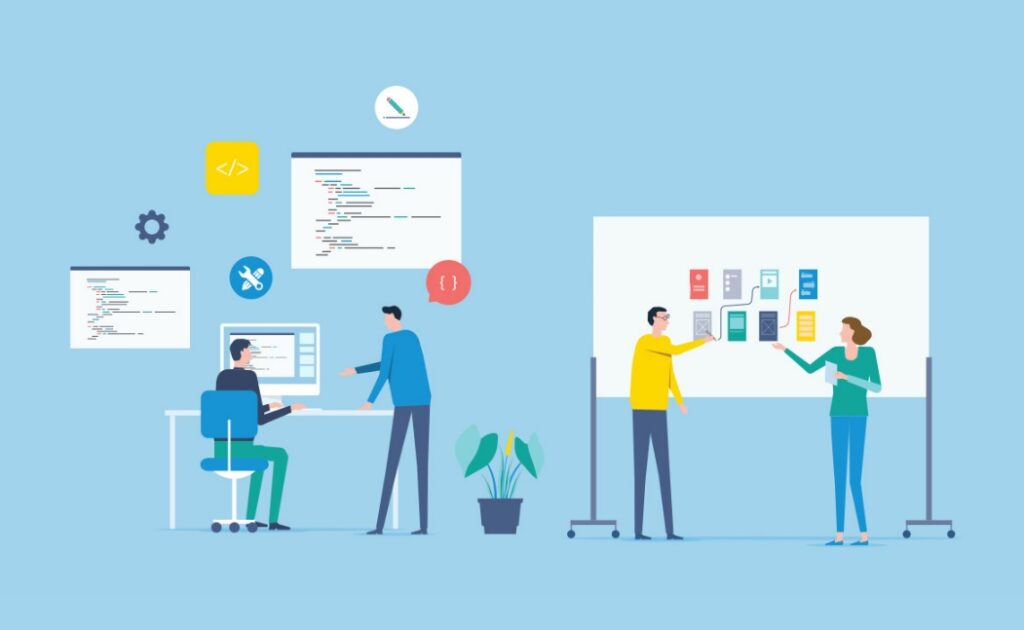I am currently working as a Postgraduate Researcher at the University of Leeds, where I am actively involved in research activities. Prior to this, I successfully completed my master's degree through the renowned Erasmus Mundus joint program, specializing in Tribology and Bachelor's degree in Mechanical Engineering from VTU in Belgaum, India. Further I handle the social media pages for Tribonet and I have my youtube channel Tribo Geek.
Digital platforms for R&D services
Table of Contents
Credit: This article is a summary of ‘Innovating R&D with cloud – business transformation could require cloud-enabled data, ecosystems, and services’ published in Deloitte Insights [1]
Introduction to Digital platforms for R&D services
The COVID-19 pandemic challenged the whole scientific community in different aspects of research and development. It is often credited for creating the change in the thought process of the scientific community to accelerate innovation and research to drive towards digital platforms for reaching a larger community. Irrespective of research domains say engineering applications, social applications, health sectors, etc, their outreach to different research communities, industries, and society should be linked with an easy network channel. The increase in technology innovation to support research and development and their data strategies is substantial. However, the upfront technology investment in on-premise infrastructure is large and their procurement periods are long. Their costs are fixed and altogether this becomes the barrier to progress in R&D sectors. In recent years many global organizations are embracing cloud infrastructure to support remote work, however, there is a limitation in cloud optimization and their data strategies to support and enable innovation in R&D.

Source [2]
Need for a collaborative cloud approach
The collaborative approach of innovation in various research sectors such as public, private, academia, and consortiums has been highlighted during the global pandemic. The importance of this approach provides a wider range of applications for society and tends to solve various issues from a broader perspective. The need for a cloud-enabled approach to bring these sectors under one roof is a challenging task for the IT sectors.
Three key cloud approaches for next-generation R&D
The innovative technologies for bringing the R&D in the case of life science and health care sectors can be approached with three core components. These three core approaches are shown in Fig – 2. They are cloud-enabled data platforms, cloud ecosystem infrastructure, and advanced cloud services.
- Cloud-enabled data platforms: The data can be shared across the different research sectors through numerous data platforms. These platforms include enterprise data management, data exchange, open architecture strategies, centralized data warehouse, and data lakes each with unique advantages. In enterprise data management the lab data can be saved on local hard drives, thumb drives, and storage area networks however this is the traditional way of saving the data, in the case of cloud storage it allows data saving across the organization.
- Scalable cloud ecosystem infrastructure: The scalable cloud ecosystem is used for global network effect, storage scalability, and a wide range of elastic computing capabilities to power the digital ecosystem. This allows sharing the of real-world data across their internal and external public/private ecosystems. This could help in identifying the problem and finding a solution to it. However, the collaborative cloud ecosystem requires the right operating model such as a third-party arbiter to ensure data safety, risk management, and IP protection.
- Advanced cloud services: To provide feature-rich services for analyzing the data, artificial intelligence and machine learning models can be implemented. The cloud AI, ML, and Internet of things services can provide a greater innovation speed and agility across the R&D value chain.

Fig-2 Three core approaches for next-generation R&D
Five recommendations to advance the cloud-enabled data strategy across industries
Many organizations across industries are looking to modernize data platforms to reduce data costs, harness big data, create more data analysis flexibility, and tap into powerful artificial intelligence tools. Cloud technology could be the key enabler for them. Success may boil down to scalable and secure cloud data platforms to support interoperable data strategies, an ecosystem for collaborative analysis, and services to expedite and scale R&D innovation with low latency.

Fig-3 Five recommendations for cloud-enabled R&D business transformation
Reference
[2] https://www.equalexperts.com/blog/our-thinking/so-what-is-a-digital-platform-anywayl/

Be the first to comment